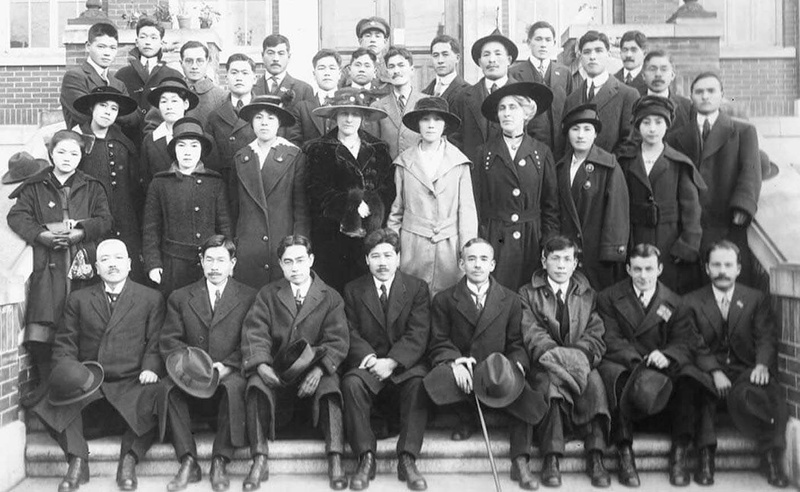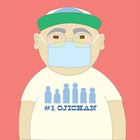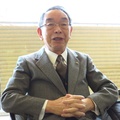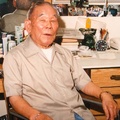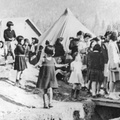The 1918 influenza epidemic swept the world for two years, infecting 500 million people and killing approximately 50 million. The outbreak first infected World War I soldiers on the battlefield, and the pandemic occurred as the soldiers returned home from the war zone, spreading the virus all around the world. Canada was not an exception, and nearly 50,000 Canadians died.
Meanwhile, racism against Japanese immigrants seemed to have toned down during the war (1914-1918). This was partly because Japan’s warships had guarded the Canadian west coast shoreline from German warships based on Yap Island, in compliance with the Anglo-Japan Treaty. After the war, demobilized soldiers flooded the labor market, pushing the Japanese workers in the lumber industry out of their jobs. In 1923, the Anglo-Japan Treaty was abolished after 20 years of alliance, and the Canadian Government passed an act that deprived 40% of Japanese fishermen of their licenses in its wake. Thus, war and racism always created synergies.
Back in the 1890s, Germany began a racist campaign agitating the public about Yellow Peril, or a fear of Asians, to avert Russia’s intrusion into the west and turn their attention to the east, just when Japan and China began interfering in Korean domestic affairs. Tension on the Korean Peninsula triggered the fire between Japan and China, leading them into the Sino-Japan War in 1894, followed by the Russo-Japan War in 1904. Imperial Japan’s victory in both wars left many Western countries stunned. For the first time, Japan’s military power was seen as a threat, fueling more anti-Asian racism.
Typhus Epidemic Hastens the Formation of a Japanese Hospital
Japanese immigrants to the British Columbia began arriving in 1880s, first as seasonal workers. The salmon fishing in the summer, in particular, attracted laborers from Wakayama, Japan to Steveston, B.C., leading the Japanese workers to form a community there in the early 1890s. Over the span of ten years, that immigrant community grew into a village of around 3,000 people. However, those laborers’ life conditions were terrible—unsanitary and unhealthy. An outbreak of typhus quickly spread, infecting many, but Stevenson’s St. Mary Hospital refused to admit and treat Japanese patients.
To comply with this emergency, the local Japanese church (which had been built by a Christian dentist Umejiro Yamamura in 1895) was immediately used as a substitute, to accommodate Japanese patients.
Meanwhile, Japanese fishermen founded the Fraser River Japanese Fishermen’s Association in 1897 and offered to pay St. Mary Hospital to accommodate Japanese patients, but their offer was declined. So the Association decided to build their own hospital, hiring Japanese doctors. Dr. Seinosuke Oishi, a Christian socialist who had studied surgery at Montreal University, is said to have worked there for a short period. His position was succeeded by another Christian doctor, Akinosuke Ishihara from Kyoto, but he had to work with the title of nurse under the supervision of a Canadian doctor since he did not have a Canadian doctor’s license. Later, Ishihara moved to the Japan Town in Vancouver and opened his own practice.
The Fraser River Japanese Fishermen’s Association Hospital in Steveston lasted for over 40 years. However, its patients were limited to the members of the Association and their families. Moreover, it was not in a convenient location, since their members were scattered along the whole west coast area. For these reasons, as the Japanese community grew, more people hoped that another Japanese hospital, located in Vancouver’s Japan Town, would open.
The 1918 Spanish Flu pandemic attacked Vancouver three times— first in the spring of 1918, then in the fall of the same year, which was much worse. Then it came back in 1919, killing over 100 people in the Japanese Canadian community alone. As the second wave of Spanish Flu overcame Canada, the Vancouver General Hospital suffered a bed shortage. When the alcohol used for disinfection ran out, it was said that the hospitals used smuggled whisky as the substitute disinfectant, despite it being the prohibition era.
In the midst of this crisis, three notable Issei emerged: Consul of Japan, Goji Ukita, Rev. Yoshimitsu Akagawa, and Dr. Kozo Shimotakahara. With approval from City Hall, they used the Strathcona Public School on Pender Street near Vancouver’s Japan Town as a temporary hospital for three weeks. The wives of Christian church members volunteered to work as nurses under the supervision of several former nurses from Japan. They worked as long as twelve hours a day. Other volunteer doctors, such as Dr. Takahashi, Dr. Kinoshita, and Dr. Ishihara, worked there, and Dr. Shimotakahara was the only licensed doctor who was authorized to issue legal prescriptions.
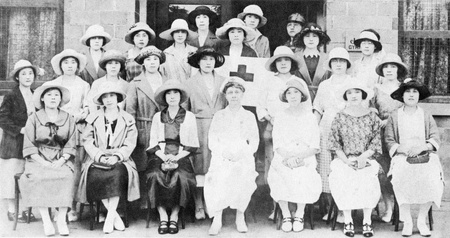
Those days, the dekasegi (migrant workers) constituted the majority of the local Japanese Canadian community. In their eyes, harsh racism was the price to pay in order to make money until they went back home. Diseases caused by the unsanitary environment and injuries caused by dangerous work were risks every migrant worker had to take. Professor Ken Kawashima of the University of Toronto called this fate of the migrant workers the “Proletariat Gamble.”
After 1911, when the influx of picture brides hit their peak, the entire community swiftly became a more family-oriented community. As Nisei babies were being born, Issei parents needed a caring physician for their children’s sake. But it was hard for them to visit local Canadian clinics, due to the language barrier.
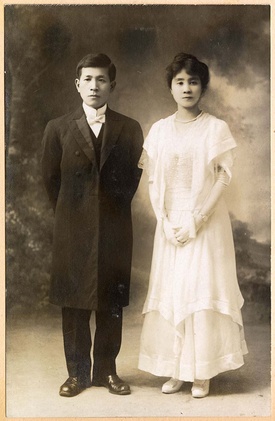
However, in 1916, the first fully-licensed Nikkei doctor opened his clinic in Japan Town, Vancouver. That doctor was Kozo Shimotakahara, (1885-1951) a legendary figure who dedicated his life to the local Nikkei community. He immigrated to Canada from Kagoshima at the age of 14 and studied at local schools while working as a houseboy (housekeeper.) He managed to complete his medical training in the United States at the University of Chicago and came back to Vancouver with his wife, Shin (nee Kusama, 1891-1972.) Since she was an experienced nurse in the U.S., Shin and Yasuno Akagawa, also a qualified nurse from Kyoto, did a tremendous amount of work supervising the volunteer staff during the pandemic. Unlike today’s coronavirus pandemic, victims of this flu included many children, and even nurses and volunteers were infected and some died.
The local Nikkei community found that they needed their own hospital in Japan Town to prepare for the next coming pandemic. Initiated by Dr. Ishihara and Dr. Takahashi, in the Spring of 1920, the first Japanese community hospital opened on Alexander Street.
The next epidemic that spread worldwide was not a flu but tuberculosis (TB). In 1932, as the number of TB cases soared in Canada, Rev. Kosaburo Shimizu of the United Church rang the church’s bell, signaling the opening of a clinic that was set up to diagnose and treat TB patients. However, the clinic was soon overflooded with patients, due to the increasing number of cases, so it was decided to move all of the Japanese TB patients to St. Joseph Oriental Hospital’s TB ward, a medical facility in Vancouver that admitted Asian patients. St. Joseph’s Oriental Hospital had been founded in 1928 by the Missionary Sisters from the Motherhouse in Montreal.
In 1935, alarmed by the TB pandemic, Dr. Shimotakahara quickly reacted, and an X-ray machine, valued at $3,500 Canadian dollars, was donated to St. Joseph’s Oriental Hospital by a philanthropist. Dr. Shimotakahara was also known to be generous to the poor students and to the lower income patients, when it came to their medical charges. Later, when Japanese Canadians were treated as enemy aliens after the attack of the Pearl Harbor and forced to move out of their residences, he simply waived any accumulated bills that his patients owed him. The total amount of receivables was said to be more than $150,000. Dr. Shimotakahara stayed in Kaslo, a ghost town camp, where he busily worked for the local people, Japanese or non-Japanese, and continued to stay post-war, until he died of a sudden heart attack in 1951.
Looking back at Canada’s Nikkei history, from the early 1890s forward, the Japanese Canadian community transformed from a group of migrants to a family-oriented community. By the late 1910s, Nisei children began to be born. The struggles of Issei parents with a series of pandemics and recessions were made even were worse by racism. We can see that tremendous efforts were made by the medical doctors and the leaders of the community to secure the well-being of the community members.
Dr. Ishihara served in the early years of the Steveston Japanese Fishmen’s Hospital and was the only family doctor for the Japan Town in Vancouver until Dr. Shimotakahara opened his clinic in 1916. In the middle of flu epidemic, Rev. Akagawa, with his nurse wife’s help, took the initiative to set up a short-term field hospital, resourcefully using the public school. This urgent project was made possible by the diplomatic support of Consul Goji Ukita. Mr. Ukita was first posted in Vancouver in the 1890s and helped Rev. Goro Kaburagi, a brother-in-law of Dr. Ishihara, launch the first Japanese community newspaper in 1897. He also helped the community struggle through the typhus pandemic in the 1890s, twenty years before the flu pandemic in 1918. It could be said that Consul Goji Ukita was the most devoted diplomat among the high officials posted in the Japanese Canadian community.
As we look back at Nikkei history in Canada, we see that every time the community faced an urgent crisis, it produced heroes and legendary stories.
© 2020 Yusuke Tanaka


